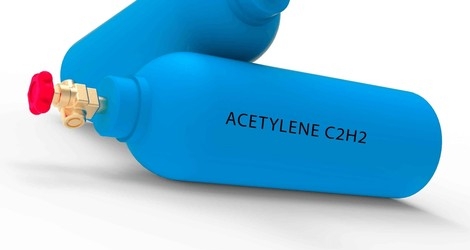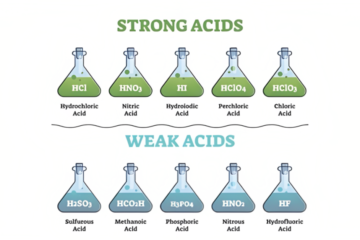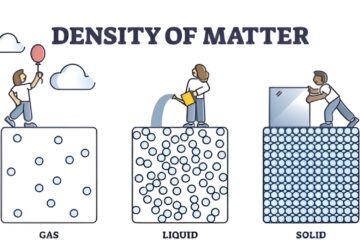Table of Contents
Introduction
Acetylene, an unsaturated hydrocarbon known as Ethyne, Narcylen, or Vinylene, boasts the molecular formula C2H2. It’s the simplest alkyne, with a carbon-carbon triple bond stealing the limelight in the chemical realm. It flaunts its versatility as a building block and fuel, contributing to industries like welding, portable lighting, and fabricating plastics and acrylic acid derivatives. Undeniably, acetylene is the explosive “rock star” of chemical compounds, making a grand entrance with flair.
Structure and Characteristics
A colourless gas with a hint of ether-like fragrance, acetylene comprises a carbon-carbon triple bond, defining its unsaturated nature. The molecule’s four atoms align straightly, with CCH bond angles of 180°. It can dissolve in water, chloroform, acetone, and benzene. However, it can only slightly dissolve in carbon disulfide and ethanol. Acetylene is lighter than air and ignites effortlessly. Exposure to heat or fire can lead to violent container ruptures, earning it a fiery, explosive reputation.
Acetylene’s key properties include:
Molecular weight: 26.038 g/mol
Density: 1.097 kg/m3
Boiling point: -84.7°C
Melting point: -80.8°C
Chemical Reactions Galore
Acetylene partakes in diverse chemical reactions, showcasing its adaptability. Common reactions are:
HBr reaction: Acetylene and HBr produce ethylidene bromide. C2H2 + HBr → CH2=CHBr
Sodium reaction: Sodium reacts with acetylene to form sodium hydro acetylide and hydrogen Na + C2H2 → NaHC2 + H2
HCl reaction: Acetylene and HCl form CH3CHCl2. C2H2 + HCl → CH2=CHCl → CH3CHCl2
Production
Since the 1950s, partial methane combustion (CH4) has been the primary method of acetylene synthesis. Calcium carbide hydrolysis, discovered by Friedrich Wohler in 1862, requires extraordinarily high temperatures (~2000°C) and an electric arc furnace. Enabled by the Niagara Falls hydroelectric power plant, this process revolutionized the late 19th-century US chemical industry.
CaC2 + 2H2O → Ca(OH)2 + C2H2
Applications
Welding: Acetylene’s high flame temperature (over 3,600 K) makes it suitable for oxyacetylene gas welding and cutting. However, arc-based welding has somewhat supplanted oxy-fuel welding, leading to a decline in acetylene’s use – but it remains “fired up” for other purposes.
Portable lighting: Calcium carbide produces acetylene, employed in lamps for close or remote locations, such as early motor cars, lighthouses, and by miners and cavers before incandescent and LED lighting became widespread. A genuinely illuminating idea!
Plastics and acrylic acid derivatives: Acetylene can be semi-hydrogenated to ethylene, forming a feedstock for various polyethylene plastics. It can also convert to acrylic acid derivatives, yielding products like acrylic fibres, lenses, paints, resins, and polymers. Acetylene is the chemical world’s “Jack of all trades.”
Other acetylene uses include:
Brazing: Acetylene’s high flame temperature facilitates brazing operations, joining metals by melting filler material between them – the ultimate matchmaker for metals.
Glass production: Acetylene’s high heat capacity is used in the manufacturing process of specific glass types, melting silica and ensuring a “glass act” performance.
Synthetic rubber manufacturing: Acetylene is a raw material for synthetic rubber production, such as neoprene, contributing to the creation of tires and other rubber products for a smooth ride.
Soldering metals: Acetylene aids in soldering operations, joining metal pieces by melting a filler material, showcasing its versatility in metalworking.
Food preservation: As a ripening agent for fruits like bananas, acetylene produces ethylene, a hormone promoting ripening, keeping our fruit bowls stocked with ripe, delicious fruits.
Metal precipitation: Acetylene is employed in metal precipitation processes to recover valuable metals, like gold and silver, from ores, helping us “strike gold” in the mining industry.
Acetic acid production: Acetylene produces acetic acid, a key component in manufacturing vinegar and other products, ensuring our salads have that zesty flavour.
Acrylonitrile manufacturing: Acetylene contributes to producing acrylonitrile, an essential ingredient in manufacturing acrylic fibres, plastics, and resins, proving its fashionable status in the chemical world.
In conclusion
acetylene’s explosive character and adaptability render it a valuable chemical compound across diverse industries. Whether it’s lighting up the night or serving as the backbone of countless products, acetylene is always ready to make a “bang” – literally and metaphorically, setting the stage for an exhilarating performance in the realm of chemistry!
Check Our Chemistry Blog Here: Unravel the Secrets of Chemistry with Engaging Articles
Click Here to Dive Back into Our Educational Resources and Expand Your Knowledge Blog




